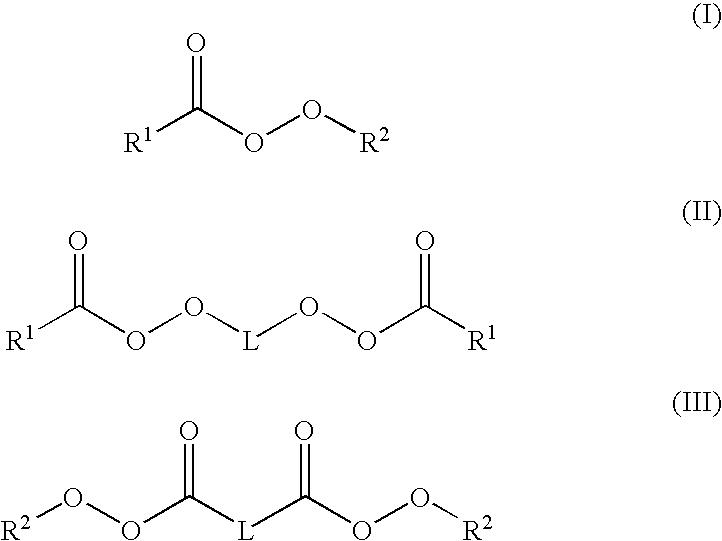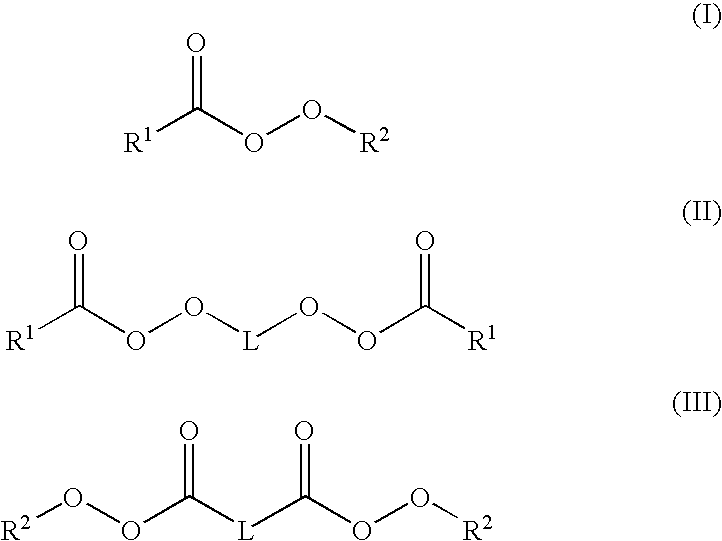Process for producing coarse-particle anion-exchanger gels
- Summary
- Abstract
- Description
- Claims
- Application Information
AI Technical Summary
Benefits of technology
Problems solved by technology
Method used
Image
Examples
example 1
a.) Preparation of a Seed Polymer
[0108]1960 ml of deionized water are placed in a 4 l glass reactor, and to this are added 630 g of a microencapsulated mixture made from 1.0% by weight of divinylbenzene, 0.2% by weight of ethylstyrene (used in the form of a commercially available mixture of divinylbenzene and ethylstyrene with 80% by weight of divinylbenzene), 0.5% by weight of tert-butyl 2-ethylperoxyhexanoate and 98.8% by weight of styrene, the microcapsules being composed of a formaldehyde-hardened complex coacervate made from gelatine and from an acrylamide-acrylic acid copolymer. The average particle size is 300 μm. The mixture is mixed with a solution made from 2.4 g of gelatine, 4 g of sodium hydrogenphosphate dodecahydrate and 100 mg of resorcinol in 80 ml of deionized water, and slowly stirred and polymerized, with stirring, for 10 h at 75° C. The polymerization is then completed by increasing the temperature to 95° C. The mixture is washed by way of a 32 μm screen and drie...
example 2 (
Inventive)
Production of a Strongly Basic Type II Anion Exchanger
[0115]1500 ml of deionized water are charged to a 4-necked flask. 70 g of sodium chloride are dissolved therein. To this are added 800 ml of moist chloromethylated bead polymer prepared by a method based on Example 1 with a chlorine content of 19.51% by weight and 312 g of dimethylaminoethanol. The suspension is heated to 90° C. in 2 h and stirred for a further 2 hours at 90° C. and 6 hours at 95° C. After cooling to room temperature, the mother liquor is removed under suction, and the resin is then washed with 1 600 ml of demineralized water. The product is then stirred in 1600 ml of 3% strength by weight aqueous hydrochloric acid at 70° C. for 4 h. After cooling, the liquid is separated off, and the resin is taken up in water and eluted in a column from below using 6 bed volumes of deionized water.
[0116]
Yield: 1710 ml of resin, tamped Exchange capacity:1.32 eq / lNumber of perfect beads after production:98 / 100Average di...
PUM
| Property | Measurement | Unit |
|---|---|---|
| Grain size | aaaaa | aaaaa |
| Grain size | aaaaa | aaaaa |
| Percent by mass | aaaaa | aaaaa |
Abstract
Description
Claims
Application Information
 Login to View More
Login to View More - R&D
- Intellectual Property
- Life Sciences
- Materials
- Tech Scout
- Unparalleled Data Quality
- Higher Quality Content
- 60% Fewer Hallucinations
Browse by: Latest US Patents, China's latest patents, Technical Efficacy Thesaurus, Application Domain, Technology Topic, Popular Technical Reports.
© 2025 PatSnap. All rights reserved.Legal|Privacy policy|Modern Slavery Act Transparency Statement|Sitemap|About US| Contact US: help@patsnap.com


